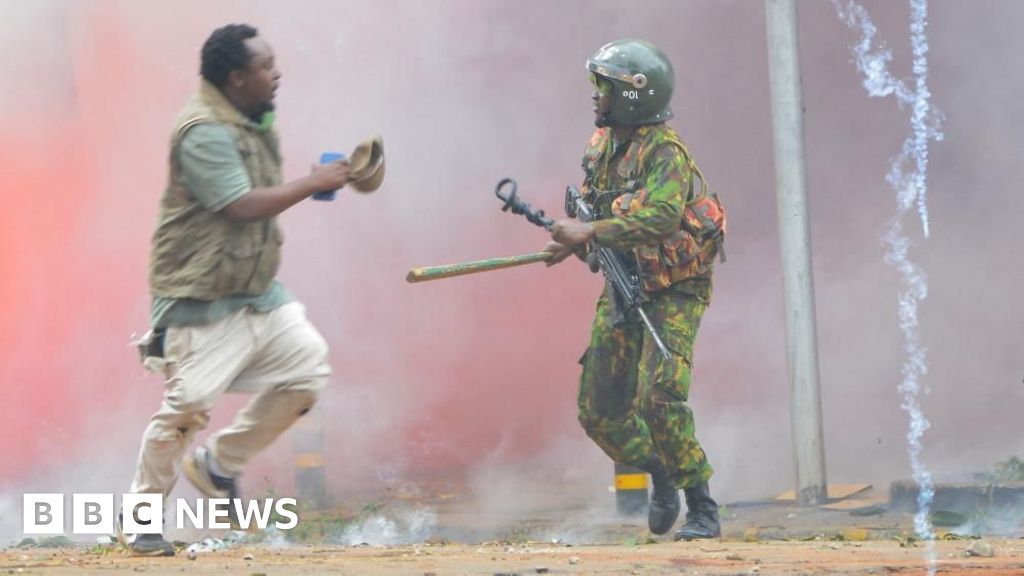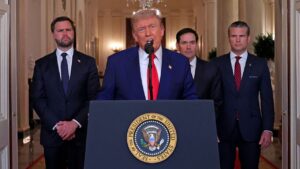
At least eight people have been killed and hundreds injured as protests erupted across Kenya, marking a significant escalation in tensions between demonstrators and the government. The unrest unfolded as thousands took to the streets to voice their discontent with President William Ruto’s administration, a year after similar demonstrations shook the nation.
Police responded with tear gas and water cannons in an attempt to disperse the crowds, leading to violent clashes in the capital, Nairobi, and other major cities. The protests, which saw many participants chanting “Ruto must go,” were initially banned from live TV and radio coverage by the government. However, this decree was swiftly overturned by the High Court in Nairobi, allowing media outlets to broadcast the unfolding events.
Background and Immediate Impact
The protests were sparked by widespread dissatisfaction with President Ruto’s leadership, with demonstrators waving branches as symbols of peaceful opposition. Despite the government’s efforts to maintain order, the situation quickly escalated, resulting in significant casualties. According to a joint statement by the Kenya Medical Association, the Law Society of Kenya, and the Police Reforms Working Group, at least eight protesters lost their lives, and 400 were injured, with 83 requiring specialized treatment.
Amnesty Kenya, a human rights organization, reported a higher death toll, suggesting that up to 16 people may have been killed. Among the injured were three police officers, highlighting the intensity of the confrontations.
Government Response and Public Sentiment
President Ruto, speaking at a burial ceremony in Kilifi County, urged protesters to refrain from threatening the peace and stability of the nation. “Protests should not be to destroy peace in Kenya. We do not have another country to go to when things go wrong. It is our responsibility to keep our country safe,” he stated. His absence from State House, his official residence, was conspicuous as young protesters threatened to storm the premises.
Authorities fortified key areas with barricades and razor wire, particularly around State House and parliament, to prevent demonstrators from advancing. Despite these measures, the protests continued unabated, with participants expressing deep-seated grievances over the country’s direction.
Voices from the Ground
Amina Mude, a protester, shared her motivations for joining the demonstrations, emphasizing her concerns for the future. “I feel like as a country we’re not going in the right direction, especially in education and everything happening. I feel like it’s high time that the country and the leadership listens to us,” she told the BBC.
In Nairobi, scenes of chaos unfolded as tear gas filled the air, forcing protesters to seek cover while coughing and shielding their eyes. The city’s streets, typically bustling with activity, were eerily quiet, with shops shuttered and businesses closed. The fence surrounding parliament became a poignant symbol of the unrest, adorned with wreaths and notes from grieving families and defiant youths.
Historical Context and Future Implications
This wave of protests comes exactly a year after similar anti-government demonstrations rocked Kenya, reflecting a persistent undercurrent of discontent. The government’s response and the subsequent public backlash highlight the challenges facing President Ruto’s administration as it grapples with maintaining order while addressing the populace’s demands.
Experts warn that the government’s handling of the protests could have long-term implications for the country’s stability. “The way the government navigates this crisis will be crucial in determining Kenya’s political future,” said Dr. John Mwangi, a political analyst at the University of Nairobi. “There is a clear need for dialogue and reform to address the root causes of the unrest.”
As the nation reflects on the events of the past year, the calls for change grow louder, with many Kenyans hoping for a peaceful resolution that addresses their concerns and paves the way for a more stable future.







